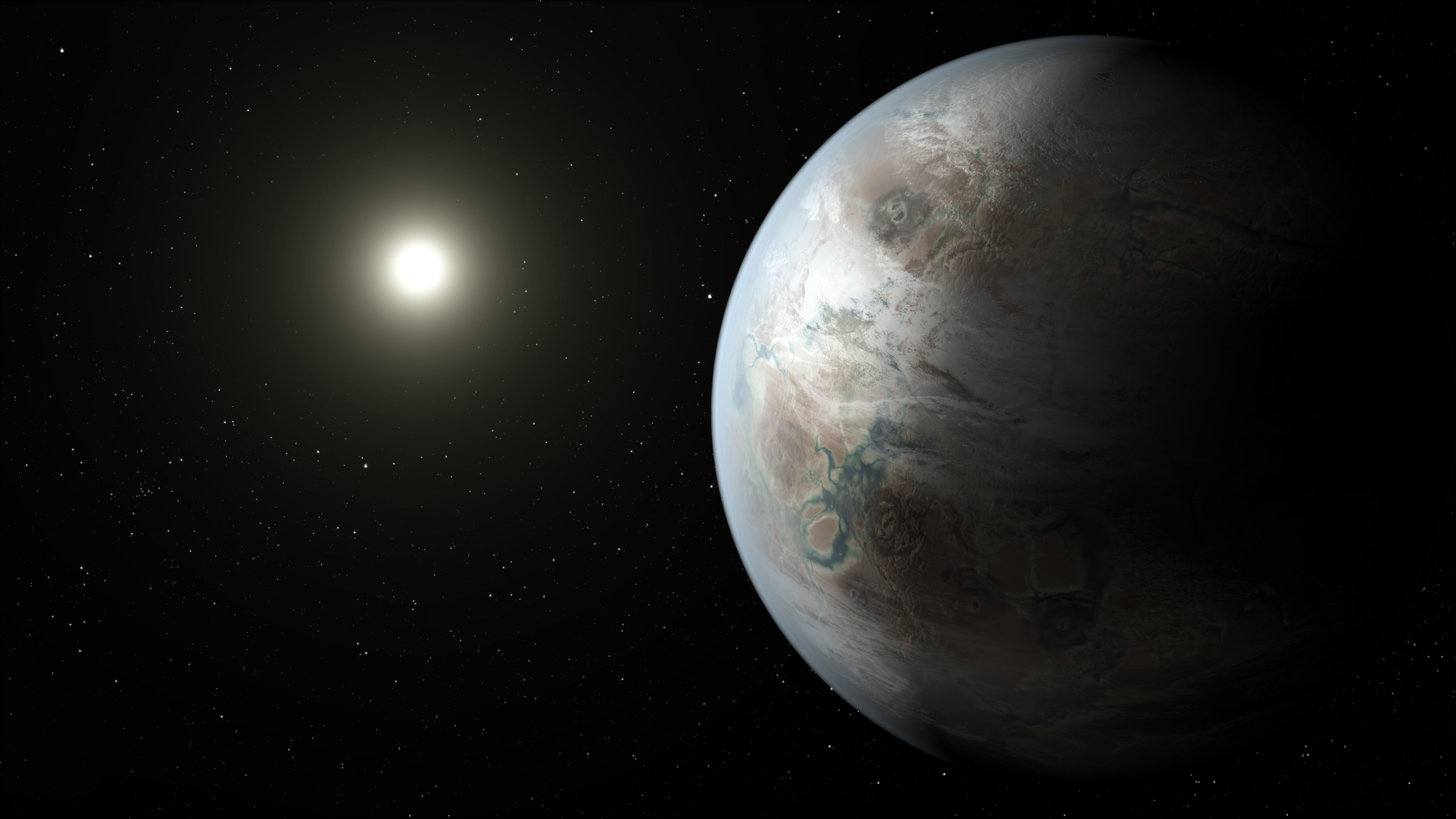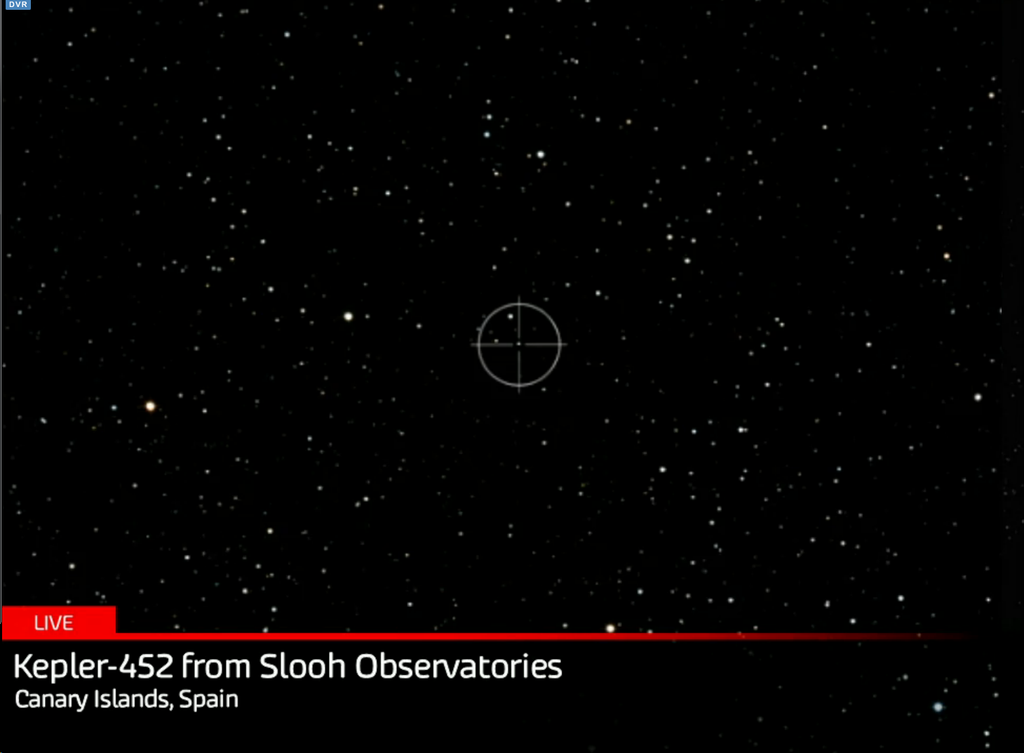SETI Targets Kepler-452b, Earth's 'Cousin,' in Search for Alien Life

Scientists with the SETI (Search for Extraterrestrial Intelligence) Institute have already begun targeting Earth's "older cousin," Kepler 452b, the first near-Earth-size world found in the habitable zone of a sun-like star.
NASA announced the discovery of Kepler-452b last week, billing the planet as the closest thing yet to an Earth 2.0 beyond Earth's solar system. Researchers have used the Allen Telescope Array, a collection of 42 radio antennas in northern California, to study the planet for radio signals that could indicate the presence of intelligent extraterrestrial life. So far, the antennas haven't tuned into any broadcasts.
"That's no reason to get discouraged," Seth Shostak, senior astronomer with the SETI Institute, which is based in Mountain View, California, said during a July 26 webcast by the Slooh Community Observatory.
"Bacteria, trilobites, dinosaurs—they were here but they weren't building radio transmitters," he said.
Tens of billions of worlds
Kepler-452 is a sunlike star, located 1,400 light-years from Earth, in the constellation Cygnus. The star's newly discovered planet, Kepler-452b, has a radius approximately 1.6 times larger than Earth's. The mass of the planet and its density, which would indicate its composition, have been a bit more challenging to pin down. [Kepler-452b: Discovery of Earth's Cousin in Pictures]
"We would love to be able to do a direct mass measurement so we could measure density," said Jon Jenkins of NASA's Ames Research Center in Moffett Field, California, lead author on the paper that identified Kepler-452b. "That would be a big clue as to whether this is a rocky world or a water world or a gassy world."

Instead, the team relied on statistics to conclude that the planet has a "better than even chance" of having a composition similar to Earth.
Get the Space.com Newsletter
Breaking space news, the latest updates on rocket launches, skywatching events and more!
"The odds slightly favor this planet being rocky," Jenkins said.
Based on its size, orbit and star, Kepler-452b is the closest analogue to Earth yet discovered, its discoverers and NASA officials have said.
Kepler-452b orbits its star once every 385 days, about three weeks longer than Earth takes to travel around the sun. This orbit places the planet squarely in what scientists call the "habitable zone," the region around a star where liquid water could exist at a planet's surface. Water is thought to be a key requirement for life to evolve, so Kepler-452b is one of the best potentially habitable worlds found to date.
How to hunt for intelligent aliens

SETI Institute researchers are using the Allen Telescope Array, a collection of 6-meter (20 feet) telescopes in the Cascade Mountains of California, to observe Kepler-452b. So far, the array has observed the exoplanet on over 2 billion frequency bands, with no result. The telescopes will continue to observe over a total of 9 billion channels, searching for signals of alien intelligence.
"There are three ways to find life in space," Shostak said. The first is to "go there and look", as humans are doing on Mars and the moons of the solar system, he said. For planets like Kepler-452b, which lie so far from the solar system, such a trip would be a challenge with today's technology. [Related: What Would It Be Like to Live on Kepler-452b?]
The second is to "build big telescopes and analyze the light bouncing off of a planet," Shostak said. NASA's Hubble Space Telescope has already begun to probe the atmospheres of distant planets. However, Jenkins said, the host star is too dim to allow for this sort of examination with either Hubble or its successor, the James Webb Space Telescope.
The third way to find life in space is to search for signals that could indicate intelligence. "That's what SETI does," Shostak said.
Both Shostak and Jenkins emphasized that what makes Kepler-452b truly important is what it indicates for the wide population of planets beyond the solar system. Before this planet's discovery, no sun-like stars had been found to host rocky worlds in their habitable zones, making Earth fairly unique in the known galaxy. Although statistics suggested many such planets orbited other stars, no such worlds had been observed with modern instruments.
Jenkins noted that the existence of Kepler-452b suggests similar finds will be made in the near future.
"We have a really good opportunity in the future to find a similar-size planet in a similar-size orbit about a similar star far closer to us," he said.
Unlike the distant exoplanet, a closer exoplanet could have its atmosphere probed for potential signatures of life.
"What you really want to know is what [fraction] of planets could be habitable," Shostak said. He added that Kepler-452b suggests that fraction is perhaps one in five, or even one in three.
"There could be tens of billions of such worlds in the galaxy," Shostak said.
Follow Nola Taylor Redd on Twitter @NolaTRedd Follow us @Spacedotcom, Facebook or Google+. Originally published on Space.com.
Join our Space Forums to keep talking space on the latest missions, night sky and more! And if you have a news tip, correction or comment, let us know at: community@space.com.

Nola Taylor Tillman is a contributing writer for Space.com. She loves all things space and astronomy-related, and enjoys the opportunity to learn more. She has a Bachelor’s degree in English and Astrophysics from Agnes Scott college and served as an intern at Sky & Telescope magazine. In her free time, she homeschools her four children. Follow her on Twitter at @NolaTRedd









